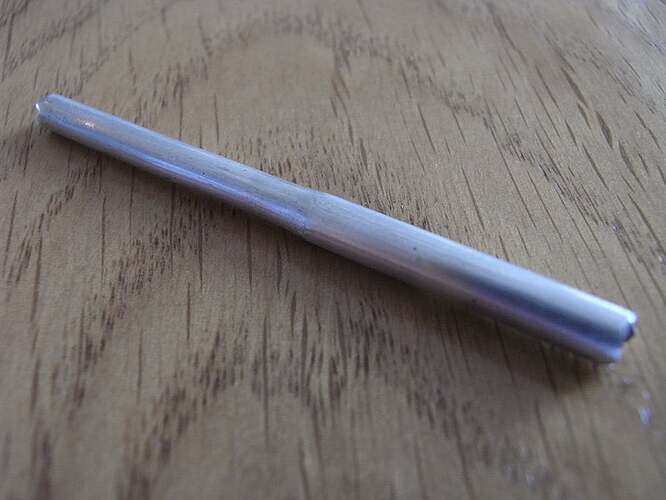To elaborate on Matthew Durston’s comment about how to avoid the
flashing that occurs when rolling stock through the square (or round)
grooves:
When an ingot is rolled through the grooved section of the mill, the
rollers exert a lot of pressure on that ingot, forcing the ingot
narrower, longer, and also sideways in the groove. So as force is
exerted on the ingot being rolled, the metal must be allowed to push
outward as it is condensed and elongated by the action of the rolling
mill. As long as some space is left between the rollers, the metal
being squeezed will push outward slightly, but ideally not enough to
form a sharp “fin” or flashing on the ingot. If the rollers are too
tight, or even touching together when you exert pressure on the ingot
being rolled, the pressure on the ingot will often “extrude” out of
the groove and form this unwanted fin or flashing on the ingot.
The square shape of the rollers are designed to assure a 90 degree
orientation of the wire being run through the rollers. The first
pass pushes on the top and bottom corners of the wire ( the 12
o’clock and 6 o’clock positions), and the second pass should have the
square ingot turned 90 degrees, so the wire is run through to press
the corners not previously rolled ( the 9 o’clock and 3 o’clock
position). After both rolls, all the sides of the square should now
be equal.
If the rollers are touching together while this process is being
done, expect fins to form on the wire’s corners, but then folded over
onto the ingot by the next roll. These fins are not easily seen after
the square wire emerges from the mill. When you start to pull the
wire round, a "shredding " of the wire seems to occur, which is just
those extruded fins being pulled off by the drawing process.
The chamfered bottom of the “V” shapes grooves help control stress
on the outer corners of the square shape being formed by the grooves,
helping to prevent cracking on a sharp-edged corner. It also works
nicely to “upset” even, flat edges on wide wire stock run through the
grooved rollers, to narrow and even the stock.
Not having used the new round rollers Durston has produced, I can
only assume one would use them much like the square grooves ( “V”
shapes grooves") in that the wire must be rotated 90 degrees for each
pass. A little trickier to do, I am thinking, as there is no corner
to calculate the 90 degree turn each time. Again, if the rollers are
too tight, I would expect a fin or flashing to occur. Keep the mill
open a bit to prevent this.
Jay Whaley
